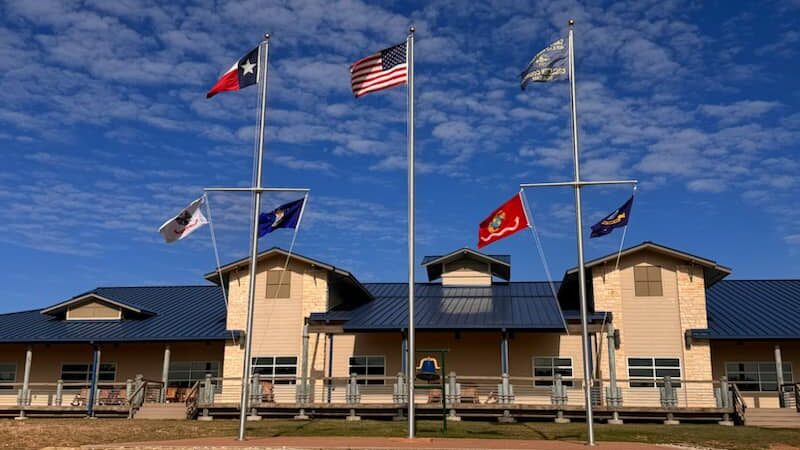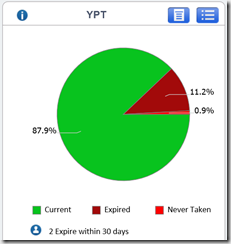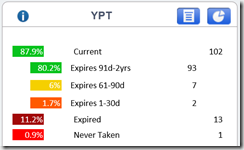As Pack leaders are starting to think about the next school year, many often lament or hope for an influx of new adult volunteers to help the Pack run. So, how do you do that?
Register them
That isn’t meant to be trite or over-simplistic, but the process starts on the first night of School Night for Scouting (SNfS) or whatever you call your Fall recruiting event. When the new families come to sit down, every seat should have stacks of:
- Information about Scouting
- Information about your Pack, including calendars for the first 60 days, new uniform details, and key contact information
- A Youth Application
- An Adult Application
Most folks, when they get a stack of papers and they are “ready” (most are or they wouldn’t be giving up an evening at home) to join will start filling out whatever paper is in front of them because they haven’t figured out that it is optional. This isn’t trying to trick them; just start with the assumption that every adult will join, until proven otherwise. If you only expect a new Den Leader and Assistant, and maybe a Committee Member, per table, than you will be lucky to get that and not much else.
But it costs an extra $20 dollars?
Yes, it does. It also emphasizes from the very first interaction that they are expected to be involved, and it helps with a little more commitment on the whole family to participate in Scouting. By the way, it also protects them with BSA insurance on any Pack or Den event that they go on, since many will be bringing their kids – and that insurance can be a life saver (see earlier blog).
Some of our families can’t afford even the minimum
I respect that, but many Councils and Packs have extra scholarship dollars. If your Pack is in an area that consistently needs that, consider adding $2 to all annual dues. But dropping the adult fees (and the adult’s service to the Pack) is not a good way to reduce the investment, since the Pack will be growing to serve the boy either way.
One of the key tenants of character building is self‑reliance, so if a parent will likely have financial needs throughout the year, it is even more important that they help contribute to the Pack by serving as a leader. Maybe something as simple as a helper for Blue & Gold, or selling snacks at the Pinewood Derby, or as an assistant Den Leader.
Start with some assumptions:
- Most parents will fill out paperwork, if it is put in front of them
- Most of those parents will help out if specifically asked (start with small jobs)
- Most parents in financial-need will “pay in service” until you tell them that they don’t have to
- Push the scholarships – don’t reduce the price
Some readers might be defensive by now, but I would offer that Scouting has value that far exceeds the cost. Similar to sales businesses, don’t drop the price — because that diminishes the perceived value and it reduces your customers’/participants’ commitment to the program. Instead, make that same effort to over-articulate the value of Scouting – all that the boys will get out of it, all that the families will get from it, and how cheap it is compared to alternative youth programs.
Suggested Do’s and Don’t
Don’t just enroll the kids at SNfS – or you will perpetuate your lack of adult-involvement problem. It is inordinantly harder to recruit them later, and you’ll never get as many as there were at SNfS.
Don’t take the adult applications at SNfS without processing them. Some Packs take the applications and file them until the adult is slotted to a role – DON’T. First, the adult application has SSN’s and other personal information, so Pack leaders should process them and get them out of their hands and into Council, as quickly as possible. Secondly, everyone can be Committee Members until proven otherwise. You can always turn them into Asst. Den Leaders later, but get them into the system and then figure out in what way(s) that they can help.
Don’t let them leave with their applications to “think about it” – as described in my earlier SNfS blogs, have a sign-up sheet as they first enter, with phone numbers and email addresses, so that you can later reconcile they applications to those that attended. Even if they appear hesitant, try to “sit” on the applications (youth & adult) and then help them finish them when they return.
Most Importantly – BELIEVE that Every Parent Can Serve
There are 40+ Cub Belt Loops covering almost every hobby and sport that an elementary-aged kid would likely have any interest in, along with twenty in-depth Webelos pins and a nearly infinite amount of supporting activities that support the Tiger go-see-it’s and the Wolf/Bear modules.
It is hard to imagine a case where every single parent doesn’t have a little something that can be applied to helping somewhere in the Pack – and if all that fails, there are lots of small (and large) roles on the committee for functions throughout the year. The problem isn’t that the parent can’t help, but that no one has helped them discover where they can. But you, as the current Pack Leaders have to believe that.
Closing Thought
Processing a bunch of new adult applications, explaining the process of Scouting and adult involvement repetitively, and then digging to find the right role for them … it is a lot of work, but it is far less work than carrying the Pack on the shoulders of just a few overworked volunteers.
Like this:
Like Loading...




